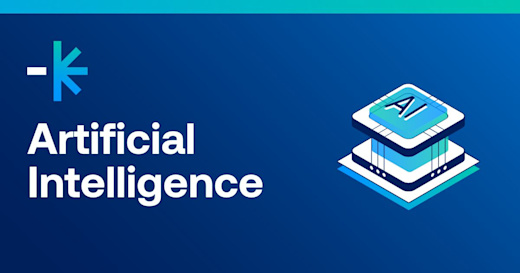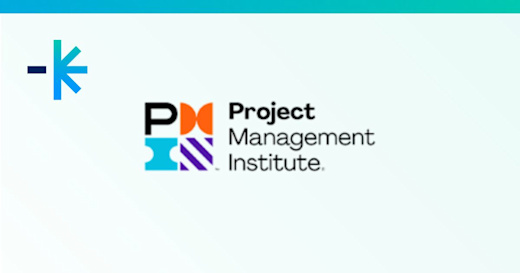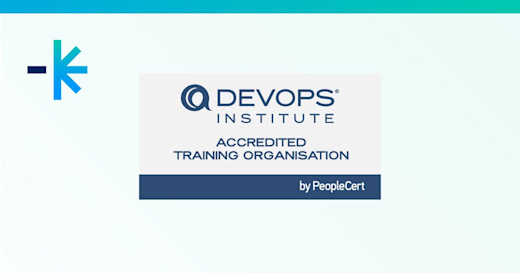Published initially on TechDay, Chris Duffy, Lumify Group AI Technical Instructor and Consultant, shares why we need further training to maximise the capabilities of artificial intelligence.
Several months since the launch of ChatGPT and we've opened to a world of productivity boosts, questions, answers and ongoing debates (just ask my students). But what has been clear and constant is the need to upskill -- and fast.
Artificial Intelligence (AI) has changed how many of us work and prompted legislative discussions. To further these, we must advance end user digital skills and meet the growing demand for AI specialists.
AI everywhere
In a BBC Radio interview, Sir Paul McCartney shared that he has created "the last Beatles record" with AI assistance. He explained how the tech had been used to "extricate" bandmate John Lennon's vocals from an old demo to complete the song.
Meanwhile, GitHub's survey found that 92 per cent of web developers already use AI coding tools. And 70 per cent expressed how AI offers an advantage at work, with many revisiting company policies on tracking developer performance.
In cyber security, IEEE Computer Society highlights how AI and Machine Learning (ML) can improve threat hunting, vulnerability management and policies and topography in network security. The catch is that fraudsters are keeping pace and using it too.
Speaking of policies, the European Union is working to pass a law to regulate Artificial Intelligence - a landmark for governments worldwide. The AI Act includes bans on intrusive and discriminatory uses like biometric surveillance, emotion recognition and predictive policing systems. And proposes transparency measures for general-purpose AI and foundation models like GPT.
General vs Generative AI
The call for transparency is a welcome move. I've been a believer in reading the fine print. And in getting a shared understanding of the technicalities. For example, that General AI is completely different from Generative AI.
Most know Artificial Intelligence as the field of computer science and technology focused on creating intelligent machines that can perform tasks that normally require human intelligence.
Within data science communities, it is known that there are two major types:
Narrow AI or Weak AI are systems designed to perform specific tasks or solve particular problems with a level of expertise comparable to or exceeding human capabilities in those specific areas. These systems are trained to run within predetermined boundaries. Use cases include image and facial recognition; chatbots and conversational assistants like Google Home, Siri and Alexa; self-driving vehicles; predictive maintenance models; and recommendation engines like predictive search and everyone's favourite Generative AI ChatGPT.
Then there is General AI or Strong AI. It refers to systems that can understand, learn and apply knowledge across domains and tasks. General AI aims to show a level of intelligence and cognitive ability comparable to or even surpassing human intelligence. While considerable progress has been made here, achieving true General AI still is an ongoing research challenge.
Narrowing down Generative AI
Generative AI is the kind of Artificial Intelligence that creates data like images, videos, audio, text and 3D models. Learning patterns from existing data enable this. From there, it generates new and unique outputs and, to an extent, mimics human creativity.
Generative AI is gaining popularity in industries like gaming, entertainment and product design. Breakthroughs include GPT (Generative Pre-trained Transformer) and Midjourney.
What powers Generative AI are machine learning models pre-trained on a colossal amount of data, trillions of words across many natural-language tasks. With prompts, LLMs can parse, learn and then generate text nearly indistinguishable from text produced by humans.
Nearly indistinguishable as in John Lennon’s voice but not exactly. A reminder that LLM and prompt engineering have limitations.
For one, they consume a lot of energy. LLMs sometimes fabricate information, not being attuned to the context behind data sets. And not having any physical senses like taste, they can flounder on tasks like creating a cocktail recipe.
Training the human AI trainers
For end users, these limitations mean more strategic work when using GPT tools or AI-powered office apps. You need to check for biases, review the context and align with your actual experiences on the job. End-user training or even advanced training in your specialisation like development, cyber security or graphic design, combined with company policy discussions, helps address these limitations.
For specialists, it is critical to advance your skills and knowledge in both programming languages and human languages and in human behaviour and social contexts. The team behind VoxelGPT experimented to find the limits of prompt engineering – the different ways of posing questions to LLMs to get different and better responses. They found no single, magic formula to ensure a specific type of behaviour; you need to try a mix of techniques. They also learned that the predictable property of LLMs is their unpredictability.
So, the need for training is clear:
In Australia’s AI ecosystem momentum report, developing in-house capabilities is a focus, primarily in AI strategy (60%), data analysis (57%) and AI operations (55%)
Digitalnation.NZ's analytical paper highlighted the need for more AI awareness and advanced training. Only 36% of organisations surveyed said their company's board is discussing AI.
IoTPhilippines shares that more education can help dispel misconceptions like how AI projects sit only within the scope of data scientists and machine learning experts and how all projects require a build-it-yourself approach.
“A problem well stated is a problem half solved,” to borrow from John (Dewey). This applies to AI strategies, LLM limitations and any other AI models available to us. To understand the challenges we face at work and how AI can assist, we need to upskill, today.
Explore AI courses with Lumify Work
The team at Lumify Work can help you find suitable Artificial Intelligence courses in Australia, New Zealand and the Philippines based on your learning preferences and goals. The former will help you determine delivery options like self-paced, instructor-led, or bootcamp-style courses.
Goals may relate to advancing your professional career or gearing up for a project. Understanding your objectives will determine your learning pathways and if learning specific programming languages or technologies is necessary.
Contact us to enquire about AI and ML courses. Learn about Data & AI trends and training options when you download our brochure.







